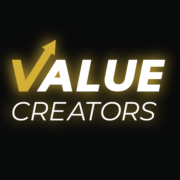The Value Creators Podcast Episode #41 – Projjal Ghatak On Harmonization Via Collaborative Team Development
Teams are the new focal point of organizational design and organizational function. Motivation – quantified as “energy” by Projjal Ghatak and Onloop – is the key to team performance. Technology is advancing to the point where motivation can be monitored using AI, and self-reported feedback and other nuanced approaches to understanding and improving motivation levels are delivering real progress. Purpose portfolios can align individual motivations with organizational goals, capturing the role of purpose in driving productivity and engagement.
Projjal mentioned companies experimenting with holocracy and distributed flat organizations, although scaling such structures was noted as challenging due to inherent human tendencies to seek direction and guidance. The conversation also explored frameworks like RAPID (Bain’s Responsible, Accountable, Perform, Informed, Decide model) and spans of control, highlighting strategies for optimizing organizational effectiveness and managerial efficiency.
Projjal emphasized the importance of respect and trust in leadership dynamics, noting that effective leaders inspire motivation and engagement through their actions and guidance. The role of AI in augmenting managerial capabilities and increasing spans of control was also discussed, highlighting the potential for technology to enhance organizational structures and improve managerial effectiveness.
Resources:
The Post-Managerial Era (Blog Post)
Connect with Hunter Hastings on LinkedIn
Connect with Projjal Ghatak on LinkedIn
Knowledge Capsule:
Changing Business Organization
Evolution of Management Concepts:
- Traditional management concepts from the industrial age are thoroughly outdated.
- The ideas of “managing” and “being managed” have no place in the 21st century business world.
- Modern businesses use software for global coordination and collaboration.
Role of Managers:
- Businesses face challenges in maximizing the potential of human resources
- There are significant changes in managerial roles due to technological advancements.
- We can reject the traditional definitions of management.
- Think instead about a collaboration and coordination role.
- And make the distinction between managers, leaders, and coaches, each with specific roles.
Managerial Challenges:
- One of the problems of the management concept is bad management – the wrong people with the wrong relationships with others.
- Many businesses lack effective managers, especially among first-time managers.
- This issue is consistent across different regions, industries, and business sizes.
Collaborative Team Development Software:
- Using technology to simplify complex problems in leadership and management.
- Inspiration from the fitness industry: breaking down tasks into manageable parts.
- Focus on motivation (energy), clarity on goals, and feedback.
- Technology structures management tasks, making them less dependent on individual skills.
Origins of Onloop:
- Personal experiences with inadequate tools led to the creation of Onloop.
- Differentiation between talent-focused technology and HR-focused technology.
Performance Management:
- Traditional performance management processes are inefficient.
- Introduction of microfeedback to replace traditional feedback methods.
Automation and AI:
- Use of AI to automate performance reviews (which, in their original form, are the worst management tools!) and synthesize feedback.
- Focus on reducing friction around regular feedback and enhancing productivity.
Engagement Focus:
- Employee engagement levels are dangerously low according to Gallup and other surveys.
- Engagement can be enhanced through CDT product usage, increasing both motivation and effectiveness.
- Regular usage reviews to understand product performance and areas for improvement.
People Management vs. HR Management:
- People management focuses on productivity and team performance.
- HR management is more about compliance and administrative functions.
Hybrid and Distributed Teams
- Hybrid teams traditionally mean a mix of remote and in-office workers.
- Modern context includes geographically and functionally distributed teams.
- Diverse teams require intentional management practices.
- Structured cadences and rhythms are necessary for effective collaboration.
Challenges in Hybrid Teams
- Informal feedback loops are disrupted in remote settings.
- Leaders need to adapt to structured communication tools like Zoom and Slack.
- Leaders accustomed to in-person interactions struggle with remote management.
- There’s a need for intentional rituals to maintain clarity and motivation.
Rituals and Cadences:
- Regular all-hands meetings to build relationships and rapport.
- Structured one-on-one conversations using frameworks like CDD (energy, goals, feedback, skills).
Calendaring Everything:
- Scheduling all important activities to ensure they happen.
- Emphasis on intentionality in scheduling to maintain productivity and team cohesion.
Collaborative Team Development:
- Shift from traditional performance management to continuous feedback and goal setting.
- Using technology to automate and simplify performance reviews.
Reducing Bias:
- Replacing manual reviews with automated summaries to minimize bias.
- Focus on observations and work outcomes rather than subjective ratings.
Bias in Traditional Systems:
- Eloquence bias and gender disparity in leadership roles.
- Extroverted, assertive individuals are often rewarded over more reserved team members.
Equal Outcomes through Technology:
- Using machine learning to ensure fair assessments and reduce bias.
- Focusing on objective performance metrics to support diversity and inclusion.
Self-Reported Metrics:
- Currently, motivation is self-reported as a “battery level” (full, empty, or in between).
- This data is visible only to the manager to maintain psychological safety.
Potential for AI:
- AI is not yet capable of accurately detecting motivation through behavior or dialogue.
- Future potential for AI to infer motivation from observations and interactions.
Integration of Well-being and Performance
- Well-being (referred to as energy levels or motivation) is crucial for productivity.
- Addressing anxiety and mental health as part of performance management.
- Reframing “wellness” as “energy levels” to increase engagement and acceptance among leaders.
- Regular energy checks are popular and help gauge team motivation.
Defining Purpose Portfolios:
- Employees should have clear purpose portfolios that align personal and professional goals.
- Activities should support these purpose pillars, enhancing motivation and fulfillment.
Future of Work with AI:
- AI will push humans to focus on uniquely human attributes, such as purpose and service orientation.
- Emphasizing service to others as a core component of motivation and leadership.
Impact of AI and VR:
- AI and immersive virtual reality will significantly change the nature of work.
- Countries like the Philippines could see economic growth by leveraging these technologies.
Rethinking Workforce Strategy:
- Developed countries need to adapt to a future where AI and VR redefine competitive and cost-effective labor.
Challenges in Current Structures:
- There is a desire to eliminate traditional hierarchies and silos within organizations.
- Future discussions to explore how firms can adapt and restructure to be more efficient and inclusive in a technologically advanced landscape.
Hierarchical Structures and Human Nature:
- Humans are wired to follow direction, as seen in parental guidance during childhood.
- This inclination often translates into a preference for hierarchical organizational structures.
Challenges with Holacracies:
- While holacratic structures like Hire exist, they face scalability issues.
- Humans’ inherent need for direction makes fully flat, networked structures difficult to implement effectively.
Frameworks for Organizational Management:
- Bain & Company’s RAPID framework (Responsible, Accountable, Perform, Informed, Decision-maker) offers a structured approach to organizational management.
- Optimal spans of control (4-8 direct reports per manager) can enhance managerial efficiency.
AI’s Role in Management:
- Advancements in AI enable managers to handle larger spans of control by delegating routine tasks to AI systems.
- This allows managers to focus more on strategic decision-making and less on routine operational tasks.








Leave a Reply
Want to join the discussion?Feel free to contribute!